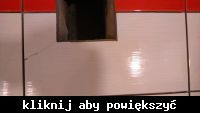What's one got to do with another...? Did I write that it is not worth priming ... ???
I wrote that hardly anyone complies with the manufacturer's recommendations regarding the use of materials. If someone uses a soil other than that recommended by the manufacturer, nothing is allowed to happen. If the primer is unsuitable, as sometimes it is, the only problem will be peeling tiles or peeling paint. If you apply any primer and it dries, it cannot interfere with the glue, plaster, etc. because it dries up and there is no such possibility. Unless you prime and start gluing the tiles immediately. The manufacturer will always suggest buying their materials, because they have to sell it. More than once, during training sessions at the manufacturer's, it was suggested or even recommended to use their tools, because they are appropriate ... and the only difference with other manufacturers was the price. For example, a stucco sheet cost PLN 70 and another with the same parameters PLN 20.
Following the manufacturer's instructions is necessary when you need to mix two substances. Because then you can be sure that when using the recommended product, nothing should happen. And if you use a different one, you are not sure if an adverse reaction will occur. Is it so hard to understand ...?
I wrote that hardly anyone complies with the manufacturer's recommendations regarding the use of materials. If someone uses a soil other than that recommended by the manufacturer, nothing is allowed to happen. If the primer is unsuitable, as sometimes it is, the only problem will be peeling tiles or peeling paint. If you apply any primer and it dries, it cannot interfere with the glue, plaster, etc. because it dries up and there is no such possibility. Unless you prime and start gluing the tiles immediately. The manufacturer will always suggest buying their materials, because they have to sell it. More than once, during training sessions at the manufacturer's, it was suggested or even recommended to use their tools, because they are appropriate ... and the only difference with other manufacturers was the price. For example, a stucco sheet cost PLN 70 and another with the same parameters PLN 20.
Following the manufacturer's instructions is necessary when you need to mix two substances. Because then you can be sure that when using the recommended product, nothing should happen. And if you use a different one, you are not sure if an adverse reaction will occur. Is it so hard to understand ...?




